Manufacturing drills in-house
A new “challenge” for us as tool makers
We purchased more and more drills each year.
Increasing our profit margin requires reducing the cost of drill purchases.
But we have to buy drills. We need them, so even if they are expensive, we have no choice but to buy them…
Four employees are attempting to manufacture drills in-house in order to solve this issue.
Project member
-

Manager Enginering
Hideaki Hoshi
Joined in 2012
Project manager. In charge of supporting machine selection and usage.
-

Assistant manager Tooling
Prayuth Pakkete
Joined in 2007
In charge of managing tool orders and tool production.
-

Supervisor Tooling
Niran Sang-aroon
Joined in 2003
In charge of designing tools to be manufactured using tool grinders.
-

Tooling engineer
Adisak Saengkong
Joined in 2017
In charge of designing tools to be manufactured, on-site testing of machined tools and data collection.
Objectives
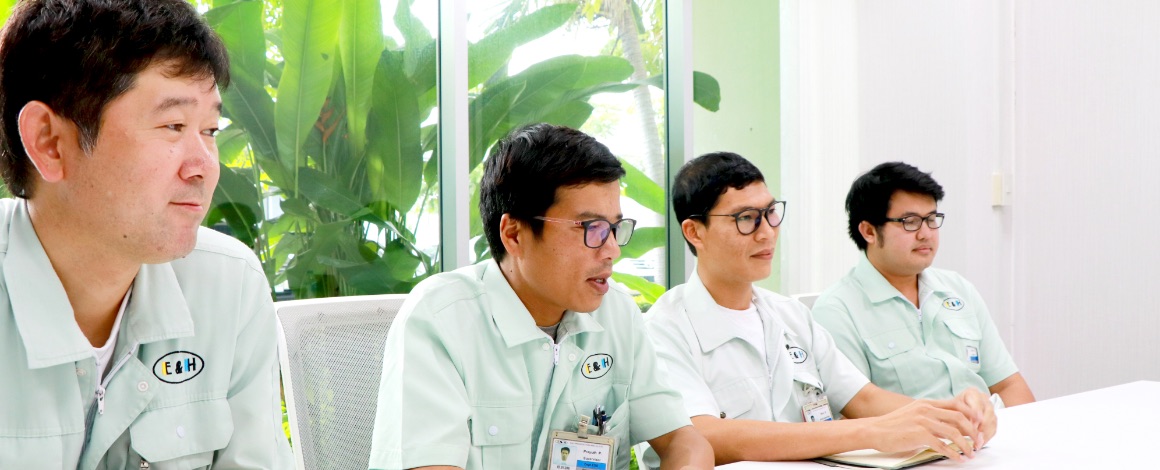
We used to purchase all of our tools externally, and the costs of tool purchases continued to rise year after year. Currently, considering drills alone, we purchase 6,000 drills annually, so increasing our profit margin requires reducing the amount we spend on tools. However, it is difficult to reduce the amount of tools that we use. There are limits.
Most typical companies wouldn’t be able to make tools even if they knew how due to issues in equipment investments and personnel, but we thought that, if purchasing amount is so high as we do, then there is a high probability of getting a return on investment even if we invest some money on equipment. Also, as we already possess a culture of grinding and using our own tools in-house, we thought that our employees would be able to make them without it feeling strange. And that is how the project started.
In drill manufacturing, the most important thing is the creation of grinding stones.
We achieved this through trial and error.
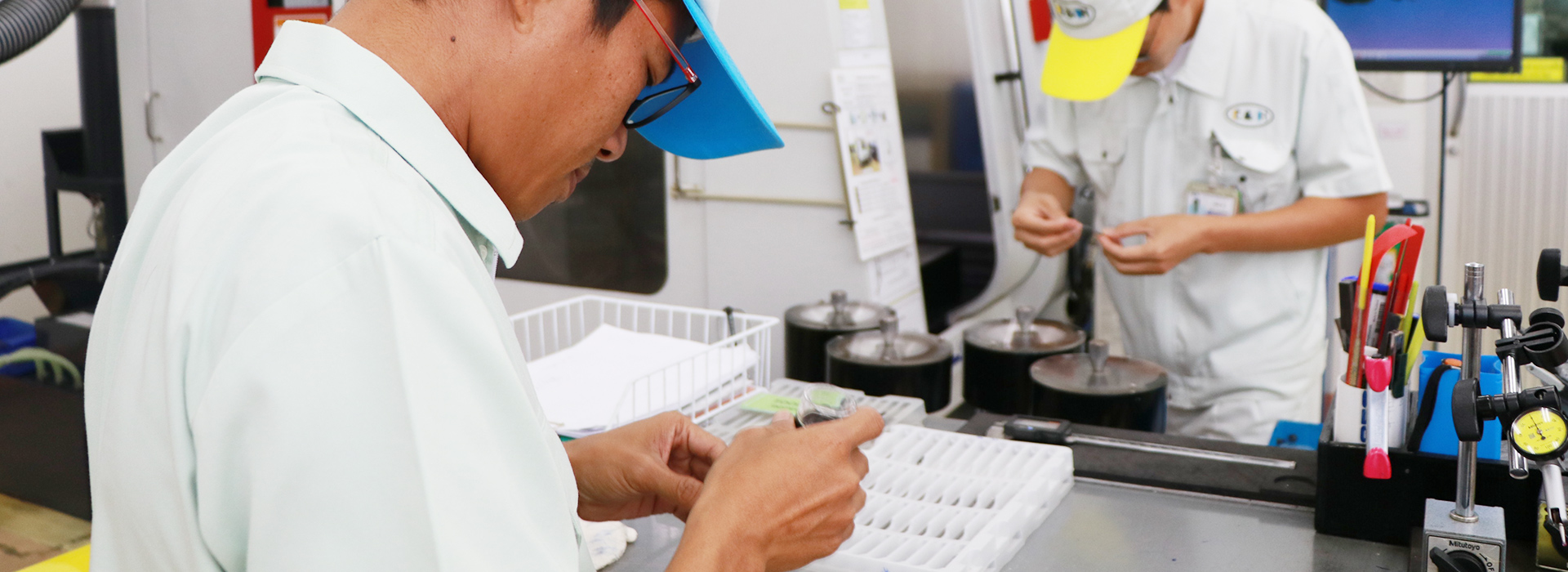

Making drills requires that you first prepare a tool to cut and grind metal and stone called a “grinding stone.”
The grinding stone itself is shaped like a disc, and it has fine curves in its periphery. The size and angle of the curve influences the shape of the drill. The sizes and angles of these curves are drill industry’s secrets, and drill manufacturers will not reveal them even when asked. We had no choice but to figure this out by ourselves through trial and error.
Typically, the biggest reason that few companies produce drills in-house is due to the money and time required to figure this out.
So that we wouldn’t need to spend much time on the grinding stone itself, we purchased simulation software, and confirmed on the computer in 3D what shape of drill would be produced by a particular shape of grinding stone. This software was quite expensive, but we receive permission to purchase it by convincing our supervisor that it was necessary through numerically showing how having and not having the software would affect drill production costs.
As there are no differences between results verified using the software and the results of actually making drill by machine, purchasing this software has enabled us to never once waste a grinding stone.
We succeeded in manufacturing high-quality drills in-house.
And it was our pride to be involved in the project.
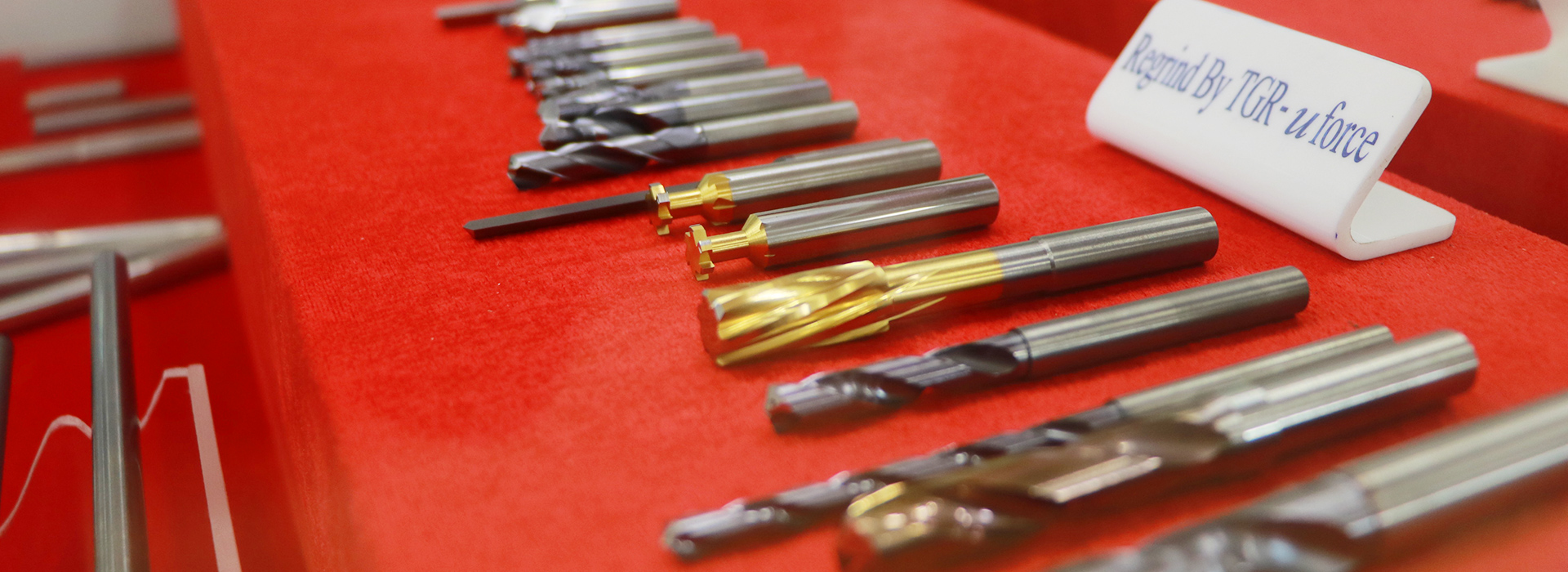
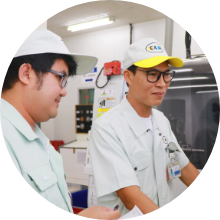
We designed the grinding stone using the simulation software and collected data on tests conducted actually using the tools created on the production floor.
If the tools created only saved enough money to be barely above the break-even point, then we would investigate how to make drills with more efficiency and more cost effectiveness.
Inspections show that the quality of the drills produced in-house is at the same level as those purchased externally.
In the past, we had occasionally created easy-to-use simple drills using hand-operated machines, but we are now proud that we have become able to create them using tool grinding lathes.
When purchasing tools, more than ten days of lead time is necessary, but when we make them in-house, the lead time is cut by half, and we are able to respond to emergency orders from customers, so we feel that, in addition to reducing money spend on purchasing drills, this project has also increased business opportunities.
It is also very enjoyable to analyze various aspects and keep trying new things.
Results were achieved faster than estimated.
We also succeeded in re-grinding in-house, which reduces maintenance costs.
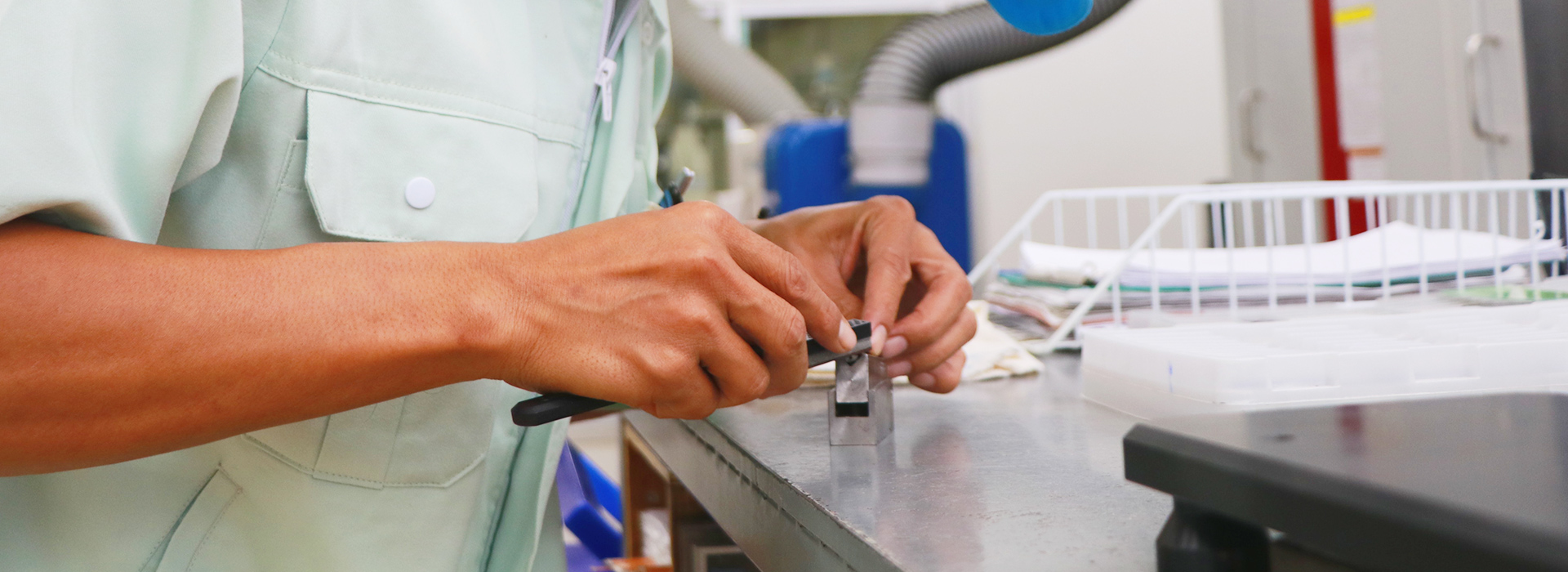

In this project, we estimated that it would take three years to reach the break-even point (defined here as the point at which “the costs incurred without installing equipment” equals “the equipment investment amount + running costs”), but we succeeded in reaching this point in just two years, which is far ahead of schedule. This project become highly-praised for magnificently achieving its goals.
The reason we were able to achieve our initial goal one year ahead of estimates was because we were able to produce more drills per month than scheduled. And I believe that this was due to the fact that the three employees, Prayuth, Niran and Adisak, fully understood the attributes of the machine and were able to rapidly increase the number of products which we could manufacture by considering what types of products would be possible.
In addition, we not only became able to produce drills in-house but also to conduct re-grinding in-house.
Re-grinding means preparing a used drill to be used again by re-grinding its tip. In the past, we used to have that performed externally as well, but when having it performed externally, they grind much amount per one time re-grinding for avoiding occurrence of un-ground area, which results in them grinding off quite a lot.
By installing a tool grinding lathe, we became able to perform this for ourselves, which means we grind only the minimum amount necessary. This enables us to use drills up to ten times, whereas before we could only use them about five times, so the result is a reduction in maintenance costs. I think this has also instilled within the employees the idea of “re-grinding only the minimum amount necessary and using drills carefully for a long time.”
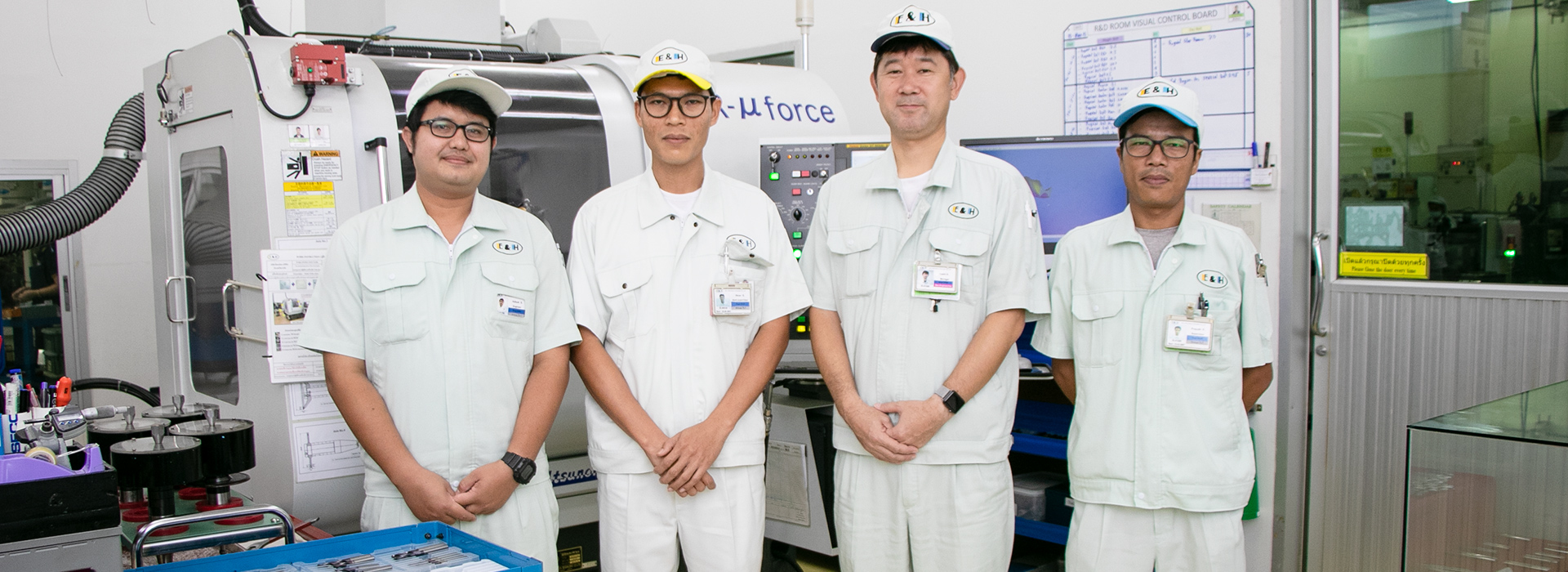
Onward toward new challenges in the future
Right now, we only manufacture in-house between 10% and 20% of the tools we need. It fluctuates back and forth within that range.
We are proceeding with a plan to purchase another machine in order to increase the number of products we can produce in-house. Our goal is to increase the ratio of tools produced in-house to 25% by 2020.
A longer-term goal is to manufacture and sell our own original brand of tools that incorporate the experiences and technologies that we have acquired over many years as a machining manufacturer. Our challenges will continue for a long time.

